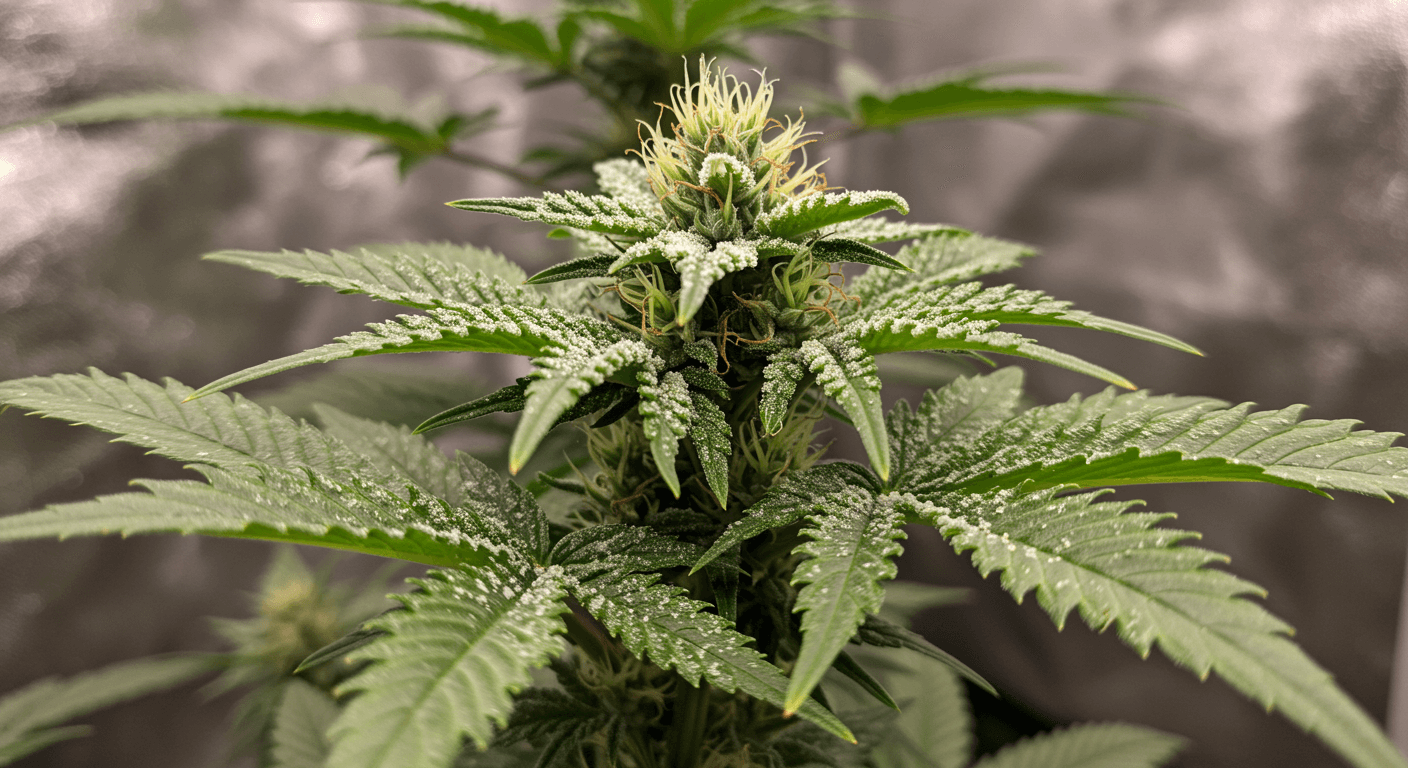Inhaltsverzeichnis
Cannabis diseases – nobody wants them, everyone gets them
You water, you aerate, you take care of your plants – and yet suddenly this white film appears on the leaves. Or a bud starts to rot, even though it just looked like gold. Welcome to the real life of a grower .
Diseases in cannabis plants are nothing new – and they're pretty persistent once you've got them. Powdery mildew, botrytis, root rot... these aren't just annoying terms, they're real crop killers. Especially if you don't know how to recognize them or, better yet, how to prevent them from happening in the first place.
That's exactly what this is about: How to keep your plants healthy , what to look out for when growing them—and what to do if something does creep in. No nonsense, no scaremongering. Just honest, practical tips.
Growing healthy from the start – this way, diseases stay out
The best cure for plant diseases? Avoid getting them in the first place. Sounds simple, and it actually is – if you follow a few basic principles. Many diseases don't arise because you're doing something completely wrong, but because small oversights add up. And that's exactly where we come in.
Here are the basics to prevent your plants from spinning in the first place:
Fresh air is a must
Poor air circulation is fungi and mold's best friend. Whether indoors or outdoors, your plants need air movement. In a tent, this means at least one recirculation fan, plus an exhaust system to remove the moist air. Without this, it quickly becomes tropical. And fungi love that.
Keep humidity under control
Humid air + flowering phase = invitation for Botrytis.
A rough guideline:
-
During the growth phase, it can be a little more humid (50–70%).
-
During flowering , you want to go down to 40–50%. Anything below that is better than anything above that.
A hygrometer costs a few euros – but saves you a lot of stress.
Do not plant too closely
It sounds obvious, but many people overcrowd their grow rooms. More plants doesn't automatically mean more yield. When the leaves touch and no light or air gets through, it becomes warm and humid—and that's exactly the climate that diseases love.
Work cleanly
Old soil, dirty tools, a bit of mold here, a bit of pest there – it all happens quicker than you think.
So: Clean tools, avoid using contaminated soil, and check the surrounding area regularly. Shoes can also introduce pathogens—especially in indoor grows.
Avoid stress
A healthy plant can cope better if things go wrong. But if it's stressed—due to incorrect pH levels, overwatering, light problems, or nutrient deficiencies—it's more susceptible to disease. So check regularly and identify problems early.

Cannabis Disease No. 1: Powdery Mildew
Powdery mildew is one of the most common fungi in cannabis cultivation – and it usually appears as a white, powdery coating on the leaves. Initially barely noticeable, it spreads quickly, weakening the plant and stunting growth. The leaves turn yellow, appear limp, and in the worst case, die completely.
Powdery mildew is primarily caused by excessive humidity, poor air circulation, and closely spaced plants. Insufficient ventilation or planting plants too close together creates perfect conditions for the fungus.
Preventative measures include maintaining a stable humidity below 50%, regular thinning, and active airflow in the grow. If the fungus is present, immediately remove infected leaves and treat the plant with neem oil or a mild baking soda solution. In severe cases, only a thorough cleaning of the entire grow will help.
Cannabis Disease No. 2: Botrytis (Bud Rot)
Botrytis – also known as bud rot – is one of the most serious diseases in the later stages of a grow. The mold is found deep within the flowers , where it unnoticed eats away at entire buds. From the outside, everything often looks fine until suddenly, part of the flower turns brown, soft, or even slimy. A sweet, musty smell is often the first real warning sign.
The main cause is excessive humidity during the flowering phase, especially in dense, poorly ventilated buds. If the air doesn't circulate and the climate remains too humid, botrytis strikes mercilessly.
Preventable by maintaining a dry flowering environment (max. 45% humidity), thorough thinning, and strong air circulation. If bud rot is discovered, there's no cure – affected buds must be removed and disposed of immediately before the mold spreads further.
Cannabis Disease No. 3: Spider Mites
Spider mites are tiny creatures that you can barely see – but their traces are unmistakable. They suck the leaves from below, causing small, light spots on the upper surface. Later, the leaves appear mottled, dry out, and curl up. Fine webs in the leaf axils are the surest sign: things are getting serious.
Infestation is usually caused by dry, warm air—a climate often found in indoor grow rooms during the growth phase. Spider mites reproduce extremely quickly, especially in the absence of natural enemies.
To prevent this, it helps to keep the humidity slightly higher (over 50%) and check the plants regularly. Neem oil, potassium soap, or predatory mites can help at the first signs. Important: Disrupt the mites' life cycle—otherwise, they'll be back in a few days.
Cannabis Disease No. 4: Root Rot
Root rot isn't immediately noticeable, but the plant will tell you pretty quickly that something's wrong: The leaves droop, turn yellow, or become spotted, even though you've done everything right. Growth stops, the plant appears limp—and when you repot it, a rotten smell emanates from the root ball. That's when you know the roots are screwed.
The cause is almost always too much water and too little oxygen at the roots. Waterlogging, poor drainage, or compacted substrate create an oxygen-poor environment in which bacteria and fungi thrive.
Prevention here means using permeable substrate, not overwatering, pots with drainage, and regular inspections. Hydroponic growers should ensure clean systems and well-aerated water. If rot is present, the only solution is usually to remove the affected parts, repot, and hope the plant recovers.
Conclusion: If you know your plants, you stay ahead of diseases
Cannabis-related illnesses are annoying, but there's no reason to panic—as long as you know what to look out for. Most problems don't arise overnight, but rather because of a small flaw somewhere in the system: too humid, too quiet, too close, or too little attention.
With a clean setup, fresh air, a bit of observation, and the right reaction in an emergency, you're in the best position. And if something does happen? No drama. Nature is resilient – and soon you will be too, once you've walked through the valley of withered leaves.
Keep it clean, keep it dry – and above all: Learn to read your plants. Then they won't read you mold sermons anymore.






Leave a comment
This site is protected by hCaptcha and the hCaptcha Privacy Policy and Terms of Service apply.